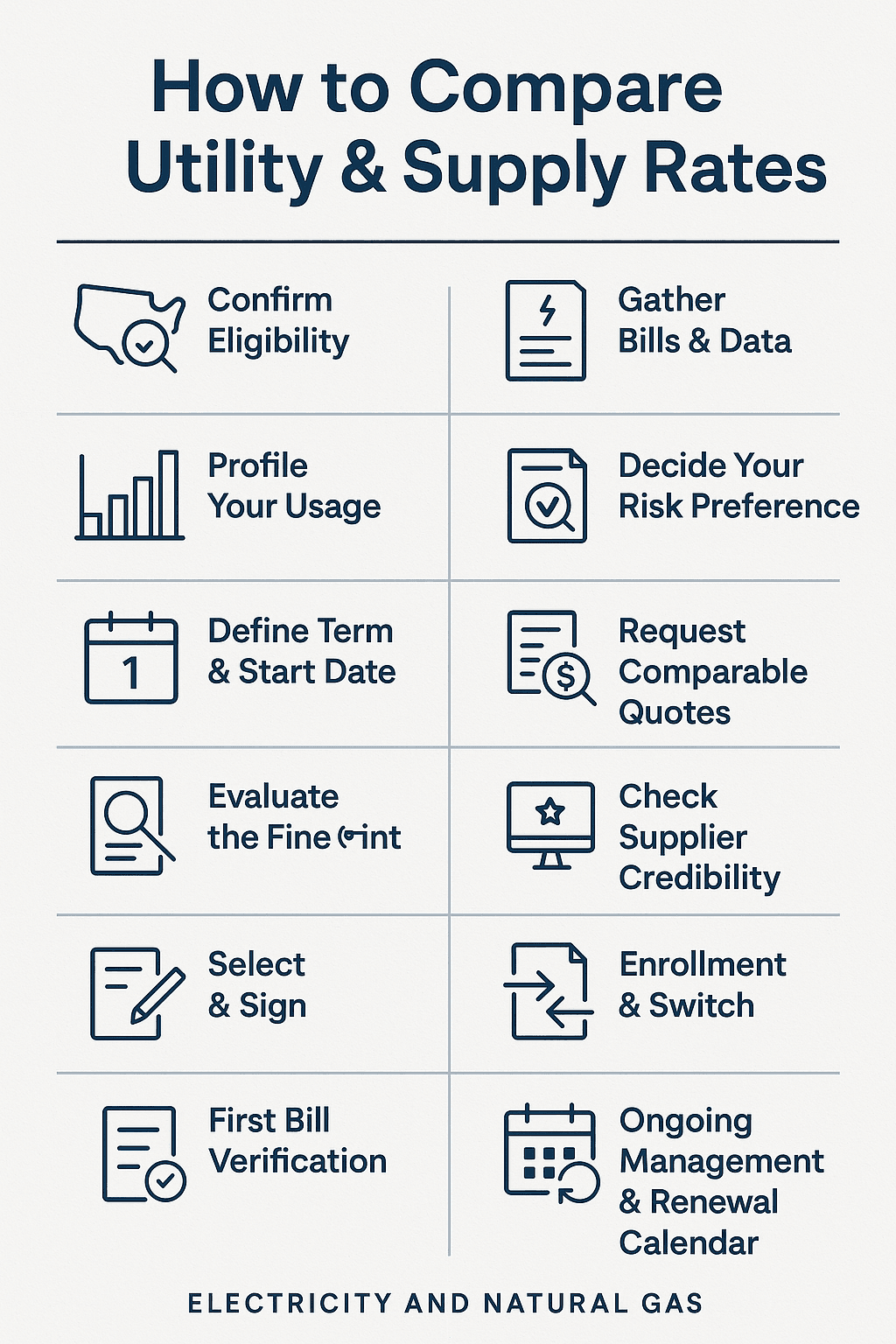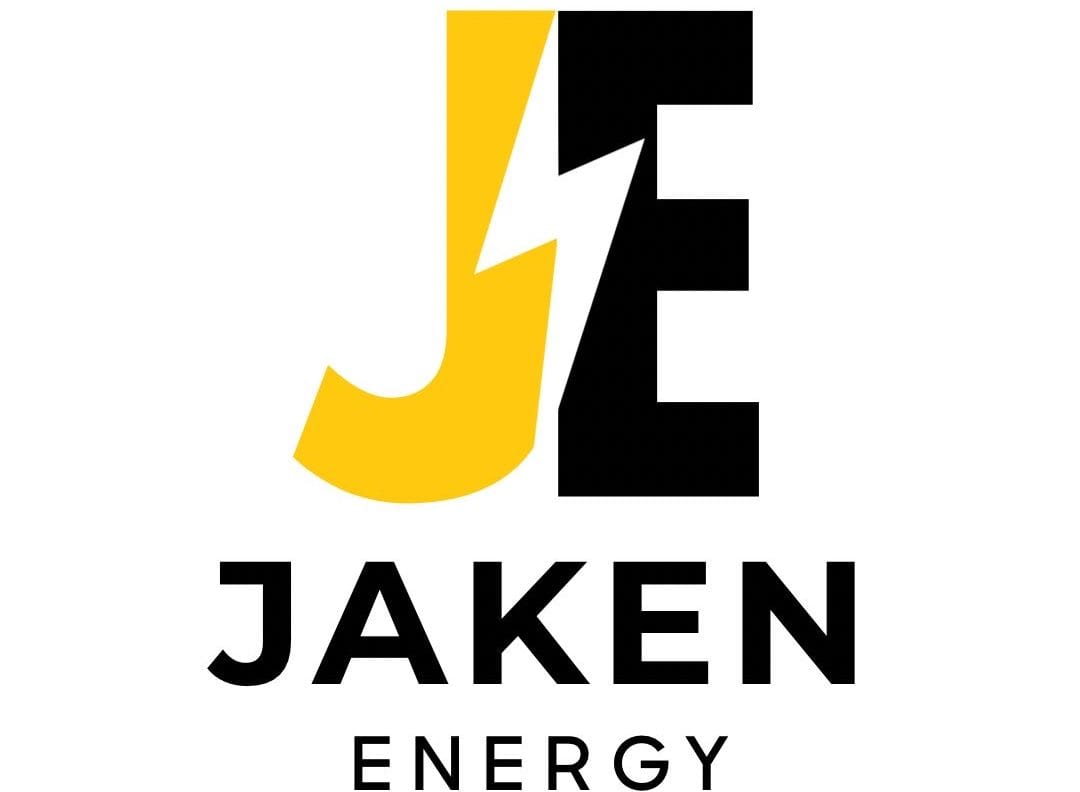Step-by-Step Guide

How Businesses in Deregulated States Can Cut Energy Costs: A Simple Step-by-Step Guide
In deregulated markets, you’re no longer stuck with a single rate from the local utility. You can shop for the supply portion of your electricity or natural-gas bill and often pay less while your utility still delivers the energy and maintains lines/pipes and outage response. Below is a clear, owner-friendly playbook you can follow (or hand to your office manager) to compare offers confidently and lock in savings.
Quick Primer: Utility vs. Supplier
- Utility = delivery, meters, service/restoration, local fees.
- Supplier = the energy you buy (kWh or therms) under a contract. You’re choosing who supplies it, not who delivers it.
The 12-Step Buying Process
- Confirm Eligibility
Make sure your facility is in a deregulated utility territory for electricity and/or natural gas. (If you have multiple locations, note which are eligible.) - Gather Bills & Data (last 12 months)
Download or scan recent bills for each meter. Aim for 12 months to capture seasonality. Key items: account/meter numbers, kWh/therms by month, peak demand (kW) for electricity, service address, and current contract end date (if any). - Profile Your Usage
Note operating hours, seasonal swings, and load factor. For gas, list winter peaks and any process loads. This helps suppliers price you accurately (and keeps quotes apples-to-apples). - Decide Your Risk Preference
Choose what you want to control:- Fixed price (budget certainty)
- Index/variable (float with market; can be cheaper but volatile)
- Hybrid (part fixed, part indexed; or block-and-index for larger users)
- Define Term & Start Date
Common terms are 12–36 months. Align the start with your next meter read or your current contract’s expiration to avoid penalties or variable holdover rates. - Request Comparable Quotes
Ask multiple suppliers (or have a broker do it) for the same specs: product type, term, start date, enrollment window, and whether the price is all-in or has pass-throughs (capacity, transmission, ancillary, basis, etc.). - Evaluate the Fine Print
Compare beyond price:- Is it truly all-inclusive or are items passed through?
- Bandwidth/swing (how much your usage can vary without repricing)
- Early termination or material change clauses
- Credit requirements and deposits
- Auto-renewal and renewal notice rules
- For gas: NYMEX + basis structure and balancing terms
- Check Supplier Credibility
Look at financial strength, customer service, billing options, and how they performed for peers in your industry. Reliability of delivery remains with the utility regardless of supplier. - Select & Sign
Choose the offer that best matches your goals (lowest cost and best terms). Sign the supply agreement. You may also sign an LOA (letter of authorization) so the supplier can confirm usage with the utility. - Enrollment & Switch
The supplier submits an enrollment to your utility. Most switches occur on the next scheduled meter read (often 1 bill cycle; sometimes 2). No truck rolls, no downtime. - First Bill Verification
On your first bill under the new contract, confirm:
- Supplier name appears
- Rate matches the agreement
- Utility delivery charges are unchanged
- Taxes/exemptions applied correctly (submit any resale/manufacturing exemptions if applicable)
- Ongoing Management & Renewal Calendar
Track savings vs. your old rate, monitor usage, and set reminders 60–120 days before contract end to avoid defaulting to a higher month-to-month price. Consider layering terms for multi-site portfolios.
What Savings Look Like
Savings vary by market, season, and your usage profile. Even a modest reduction say, a few cents per kWh or a few dimes per therm can translate into thousands of dollars per year for many commercial accounts.
Pro Tips (Worth Skimming)
- Aggregate multiple meters/locations to improve buying power and simplify renewals.
- Ask for apples-to-apples comparisons (same start date, term, product, inclusions).
- For larger electric loads, review capacity/PLC (peak load contribution) strategy.
- For gas users, understand load balancing, daily vs. monthly swings, and basis.
- Avoid hidden broker or consultant fees by insisting on transparent pricing and documentation.
- Consider green options (RECs/carbon offsets) if sustainability targets matter.
- Keep a copy of the signed contract and confirmations handy for audits and dispute resolution.
